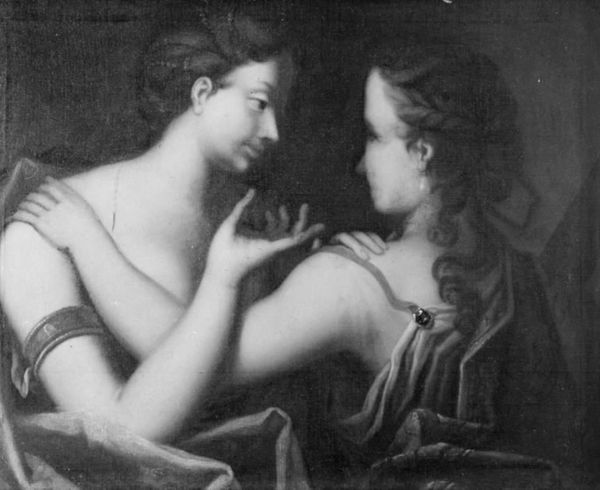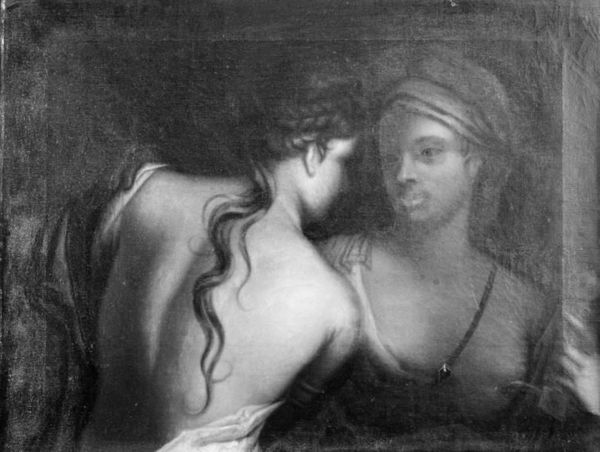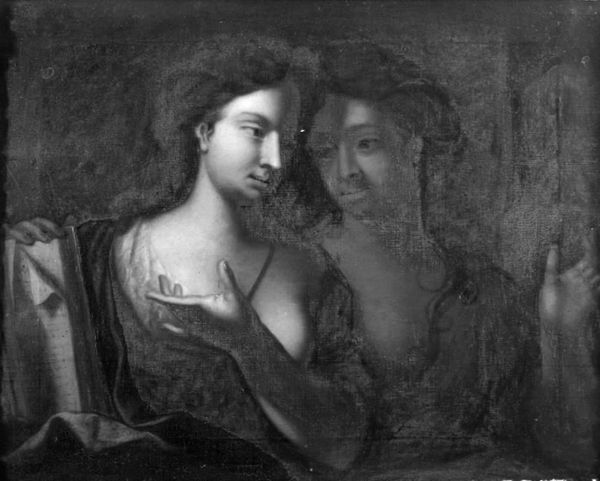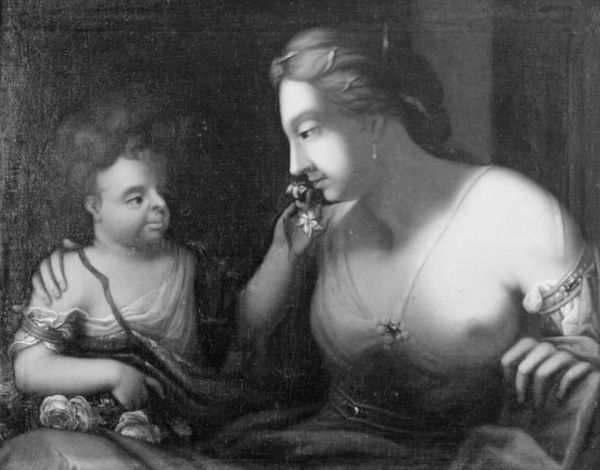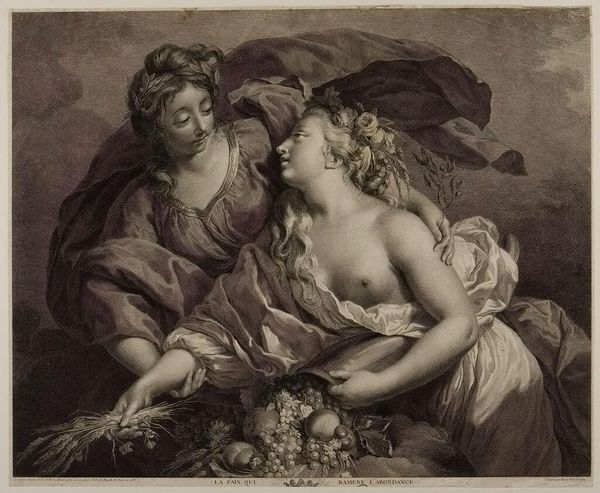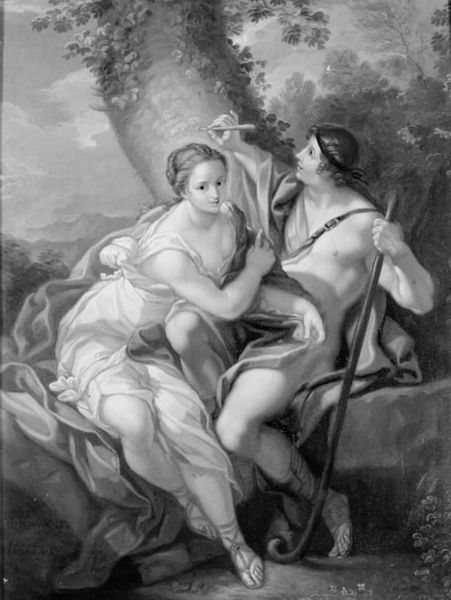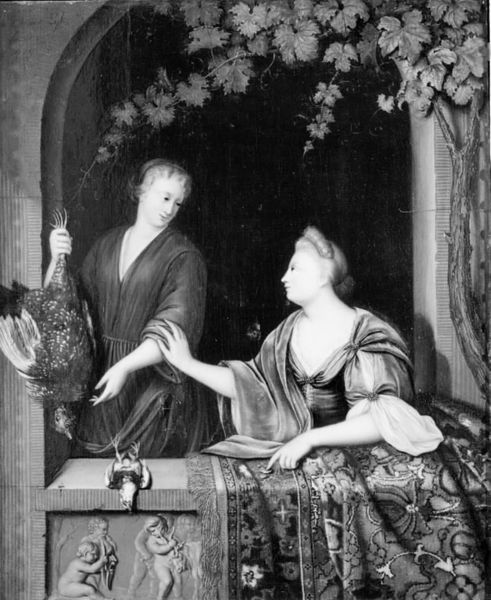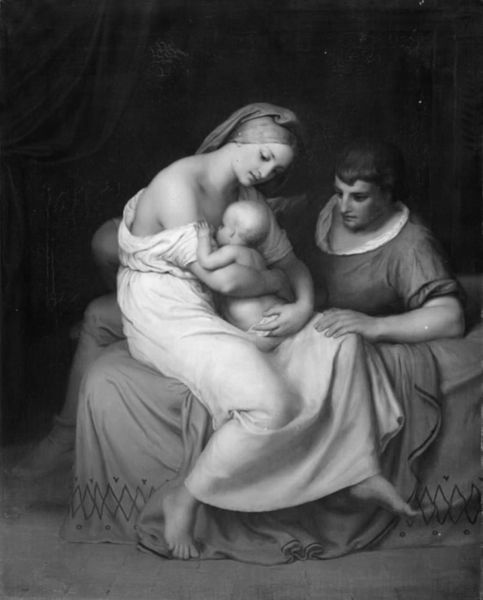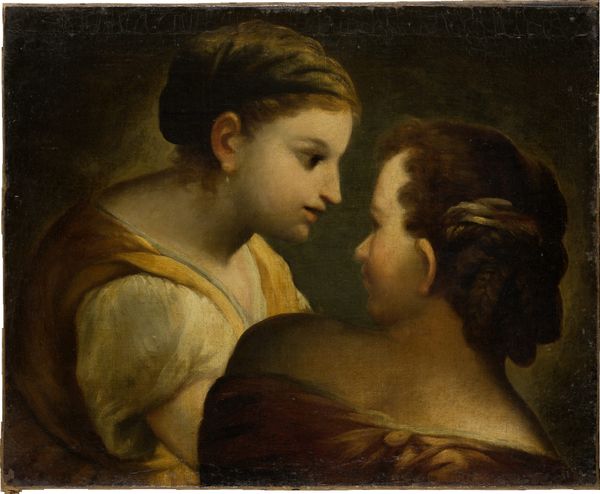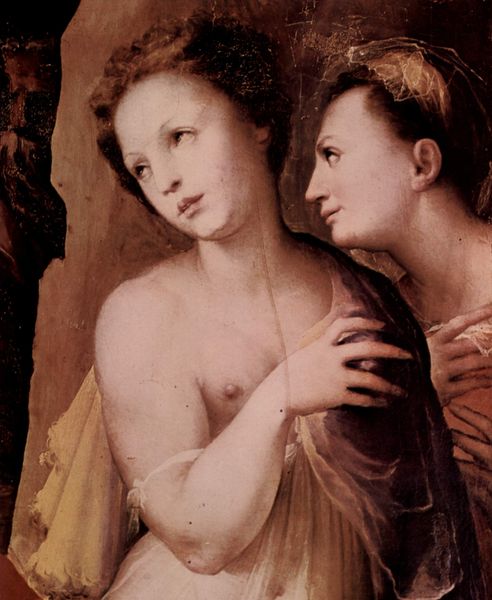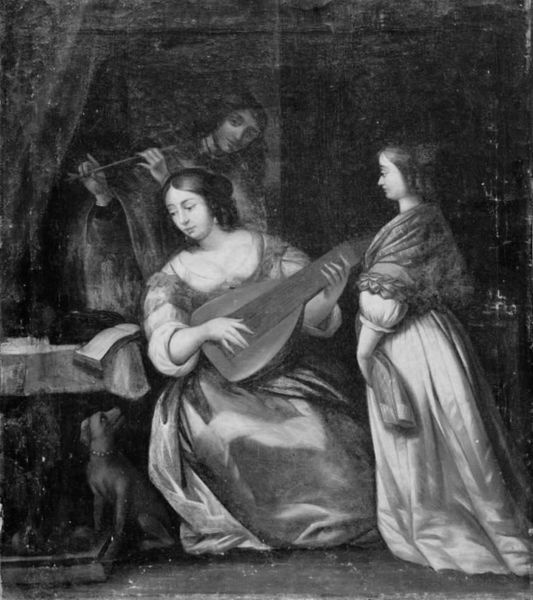
painting, oil-paint, canvas
#
portrait
#
baroque
#
portrait
#
painting
#
oil-paint
#
charcoal drawing
#
figuration
#
canvas
#
genre-painting
#
nude
Dimensions: 47.5 cm (height) x 59 cm (width) (Netto)
Editor: Here we have Jacob d’Agar’s "Tvende fruentimmer i halv figur," painted sometime between 1657 and 1715. It's rendered in oil paint on canvas. I'm immediately struck by the composition - two women, one looking directly at the viewer, the other in profile. It feels intimate and yet somehow… staged. What historical currents do you see at play in this double portrait? Curator: It's a compelling piece, isn't it? Considering the period, we see echoes of the Baroque era's emphasis on drama and sensuality, but filtered through the lens of social and courtly expectations. It’s fascinating how d’Agar navigates the tension between private life and public image. Who are these women, what class do they come from, and what sort of image is he constructing for them? The nude format could challenge the strict moral conventions. How might it have been viewed by its original audience? Editor: So, you're suggesting it's less about an honest depiction of individuals and more about projecting a particular image, influenced by the socio-political context? I notice how both are posed, and that makes it feel like there is some construction for political purposes. Curator: Precisely! Consider the role of portraiture in the 17th and 18th centuries. It wasn't just about likeness; it was a tool for asserting status, power, and ideals. The artistic skills also represent what one would expect, Baroque was an important tool in power at the time. The painting uses those ideas to enhance the position of these women. We need to think about how artistic expression served these functions, perpetuating or subtly challenging prevailing norms. The artist had certain responsibilities when creating works such as this. What is more powerful is the balance achieved between what is politically and culturally conventional and something a little unconventional, or new for the time. Editor: I see. So, deciphering this work requires understanding the political and social machinery that shaped its creation and reception. Thanks for making this accessible to me! Curator: And for prompting such insightful questions. Reflecting on the original context truly deepens our understanding.
Comments
No comments
Be the first to comment and join the conversation on the ultimate creative platform.
